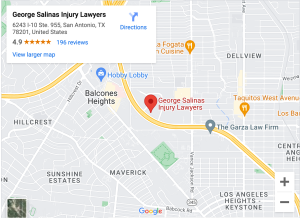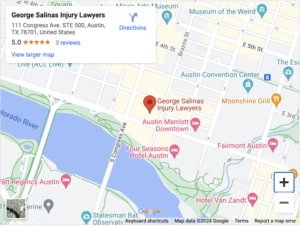
Negligence (carelessness) is the justification for most personal injury claims. A negligence claim breaks down into four legal elements, one of which is “breach of duty.” Without proving breach of duty, you have no claim. Proving breach of duty is not always easy, even when you can easily demonstrate your injury.
What You Need To Prove: The Four Elements of a Negligence Claim

To put breach of duty into context, below is a list of the four facts you need to prove to win a personal injury claim based on negligence.
- The defendant owed you a duty of care. This duty might be an ordinary duty of reasonable care or an elevated, professional duty of care.
- The defendant breached their duty of care to you. This might mean doing something they shouldn’t have done or failing to do something they should have done. Failing to stop at a stop light is an example.
- You suffered damages. In a personal injury claim, this means you must have suffered an actual physical injury.
- Causation: The defendant’s breach of duty caused your injury in a foreseeable manner. The defendant is not liable if a reasonable person would not have foreseen your injury.
You must prove each of these four facts on a “more likely than not to be true” basis to qualify for compensation.
Duty of Care: Examples
You cannot breach a duty that never applied to you in the first place. Following are some examples of duties of care that apply under various circumstances:
- A driver’s duty to drive safely. This means more than simply obeying traffic laws – it also means exercising common sense, given the circumstances.
- A doctor owes their patient a duty of professional care. The law demands that a doctor utilize all of their training and experience in treating a patient.
- A “Common carrier” such as an airline or a bus company must exercise a particularly high degree of care to protect the safety of their passengers.
- A business owner owes it to their customers to keep their premises safe by either repairing or warning of dangerous conditions such as exposed electrical wiring.
- A homeowner owes it to their guests to retrain a dog with a known tendency toward aggressive behavior.
- Nursing homes owe a high duty of care to their residents.
- Truckers must comply with extensive trucking regulations that control everything from working hours to frequency of maintenance.
- The Texas dram shop law obligates nightclubs and bars to refrain from serving alcohol to obviously intoxicated customers.
- A trucking company must examine a prospective trucker’s driving record before hiring them to haul freight.
A complete list of possible duties of care would be virtually endless.
Breach of Duty: Examples
Following are some examples of breaches of duty that frequently trigger personal injury lawsuits.
- Speeding, texting while driving, and driving under the influence of intoxicants (DUI) in car accident cases.
- A property owner who fails to repair or warn of a dangerous condition on their property.
- A doctor who harms their patient by providing incompetent medical services (leaving a scalpel inside the patient’s body after surgery, for example).
- An owner erects a swimming pool on their property without fencing it in. This might trigger liability to a child who drowns in the pool, even if the child was trespassing at the time.
- A store employee who fails to erect a ”Wet Floor” sign after mopping the floor. In this case, a slip and fall victim will usually file a claim against the store, not the employee.
In many cases, you will need an expert witness to establish breach of duty. This is especially likely when the duty in question is a professional standard.
“Breach“ in Strict Liability Cases
Not all personal injury claims are based on negligence. Some claims, for example, are subject to strict liability. This means that you don’t have to prove the defendant was at fault to win your claim. Examples include:
- Abnormally dangerous activities: Certain activities, such as construction with the use of explosives, are dangerous no matter how much care is exercised.
- Product liability claims. You don’t necessarily need to prove negligence in the case of a defective and unreasonably dangerous product, such as defectively manufactured car seat belts.
- Wild animal ownership: The owner is strictly liable for any injuries caused by a wild animal, no matter how careful they are to prevent injury.
Someone who engages in inherently dangerous activities essentially acts as an insurer of anyone who is thereby injured.
Proving Breach of Duty
Following are some of the most common types of evidence that you might use to prove that the defendant breached their duty of care to you.
- Expert witnesses testimony. An expert might also prepare a written report.
- Eyewitness testimony.
- Proof that the defendant violated a safety law or regulation (“negligence per se”).
- Charts, graphs, and visual aids.
- Photographs and CCTV footage.
At the settlement table, your lawyer can negotiate the question of breach of duty with the defendant and win by exploiting the defendant’s fear of going to court. Your lawyer might also argue your case before a jury by putting the evidence together in a way that makes sense.
Schedule a Free Initial Consultation With an Experienced San Antonio Personal Injury Attorney
Proving negligence isn’t always straightforward. Even if you can prove it, you still need to prove the amount of damages you deserve. When you are talking about hard-to-quantify elements of damages, such as pain and suffering, the quality of your San Antonio personal George Salinas Injury Lawyers can make a tremendous difference in the amount of compensation you qualify for. Contact us at (210) 225-0909 to schedule a free initial consultation to discover the strength of your claim.


